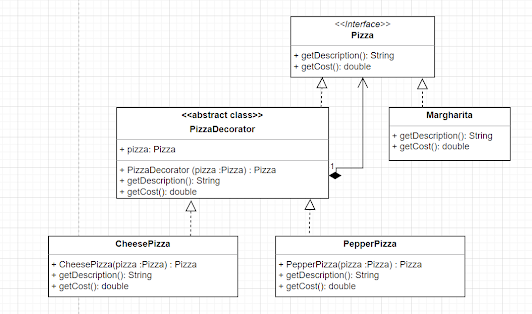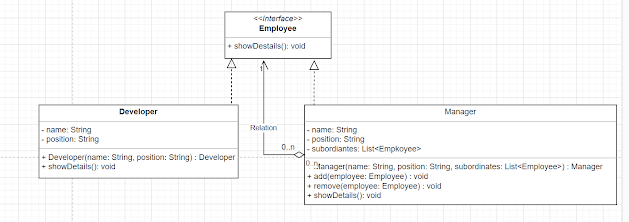Decorator Design Pattern

The Decorator Design Pattern is a structural design pattern that allows behavior to be added to an object dynamically at runtime by wrapping the object in a decorator class. It provides an alternative to subclassing for extending functionality. Key Components of the Decorator Design Pattern: Component: It is the common interface or abstract class that defines the operations that can be performed by the objects and decorators. Concrete Component: It represents the original object to which additional behavior will be added. It implements the Component interface. Decorator: It is an abstract class that implements the Component interface and has a reference to the Component object. It acts as a wrapper and provides a default implementation for the Component's operations. Concrete Decorator: It extends the Decorator class and adds additional behavior to the Component object. It overrides the Component's operations and may call the super implementation to preserve the original beha...

